Scalable, high efficiency, advanced end-user functionality, rapid deployment, continuous offgrid power supply, and zero-emissions manufacturing; this impressive list of attributes was evident in the entries selected as winners in the pv magazine 2020 Annual Awards. And the companies delivering these interesting new products deserve to be recognized for their endeavors.
The 2020 winners come from companies based in China, Europe, Israel and Australia – demonstrating that innovation within the increasingly global solar industry occurs in all parts of the world. More than 100 Award entrants came from 18 countries, with China (40), Europe (29), and the United States (24) leading the way.
Some interesting trends can be identified from the 2020 awardees and entries. As solar and energy storage continue to scale, surprising innovations reshape where and how the technology can be deployed – broadening its reach and expanding clean energy access. At the same time, there is convergence within the industry along certain technological pathways, as what was once cutting edge becomes standardized and mass produced at ever declining costs.
To select our award winners, pv magazine assembled six expert juries, with representatives from throughout the solar world. These independent adjudicators – industry analysts, technologists, researchers, and industry insiders – bring a wealth of experience and close contact to manufacturers and project developers to the process, and the pv magazine editorial team thanks them for their time and for sharing their expertise.
For the first time, pv magazine will present the award winners in a virtual Award Ceremony, meaning that all can attend and hear from the jurors and award winners themselves. The ceremony will take place on Thursday, Jan. 21 at 10 am CET (2.30pm IST, 5pm CST, 8pm AEDT). It is free to attend – we look forward to your participation!
Modules
Large-format modules were the tech trend in module making in 2020, with power outputs rising beyond 500 Wp. But it’s what’s inside the cell and module assembly technologies that caught the attention of the category jurors. In particular, new cell interconnection and a novel high-density technology made the Highly Commended and award-winning entry stand out from the rest.
Winner
JinkoSolar, Tiger module series
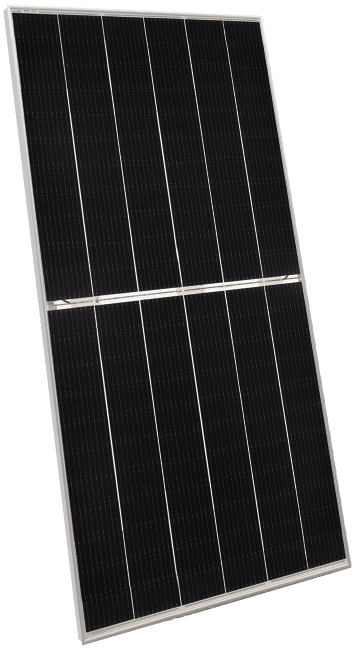 High-density modules, packing more cells and having interconnection ribbons on the rear side, have proven an effective method for raising efficiency and increasing power output. Chinese module giant JinkoSolar developed its “tiling ribbon” technology to produce a “high density” module series – the Tiger. The module series employs a special round busbar interconnection technique to achieve cell overlap on each cell’s horizontal edge (see pv magazine 05/2020).
High-density modules, packing more cells and having interconnection ribbons on the rear side, have proven an effective method for raising efficiency and increasing power output. Chinese module giant JinkoSolar developed its “tiling ribbon” technology to produce a “high density” module series – the Tiger. The module series employs a special round busbar interconnection technique to achieve cell overlap on each cell’s horizontal edge (see pv magazine 05/2020).
“The technology is really innovative and it can be applied to all sorts of different cells. For example, if Jinko has HJT in the future then it can also use the tiling ribbon,” said juror Jay Lin.
Jinko’s Tiger deploys tiling to great effect, packing 156 half cells into the larger module format for utility-scale and C&I roofs, and 132 for the residential segment. Thus, the Tiger achieves 455-475 W from 156 cells and 375-395 W from 132 – both using mono PERC cells. At 21.6% module efficiency, Jinko’s Tiger is no pussycat.
Jury comments:
Pierre Verlinden: “This is an innovative technology compared to shingling. Tiling Ribbon (TR) and shingling are fundamentally different: The length that the current must travel in a narrow finger with TR is something in the range of 10 to 15 mm, so it has a much higher efficiency than shingling technology, for which the current must travel more than 30 mm in narrow fingers. Shingling modules actually have a lower efficiency because, what you gain is hiding the busbar region, but you lose it all in resistive power loss in the fingers – because you have much longer fingers. The tiling ribbon is a much more clever technology. And the fact that it uses a standard technology, ribbon stringing adapted to reduce the gap between cell, makes it better and makes it more easily standardized in the industry.”
Anika Giller: “In terms of innovation, there is literally only Jinko doing this, focusing on this [tiling] technology – in combination with MBB, tiling, high-efficiency, transparent backsheet using Tedlar film, it’s great. I would say in general the market impact [aspect for evaluation] is something that can be a challenge, because looking from a quality standpoint the tiling technology is a challenge and it remains a challenge – especially in mass production.
Highly Commended
Longi, Hi-MO5
Two innovations make the HiMO5 stand out: gallium-doped p-type wafers deliver zero LID and help to reduce LeTID, while a new triangular busbar ribbon is designed to reflect more light on the cell surface, boosting efficiency.
With a maximum power of 540 W and a module efficiency of 21.1%, the Hi-MO5 is designed for utility-scale solar applications, where developers are looking to maximize power output on the available land. The HiMO5 deploys 182 mm gallium-doped wafers (M10), which are Longi’s favored format.
Longi labels its triangular interconnection ribbon as “Smart Soldering.” It describes it as using “integrated segmented soldering ribbons” to maximize the captured light and reduce the gap between solar cells. Additionally, it helps reduce the tensile stress of the cell for better reliability.
Jury comments:
Pierre Verlinden: “Gallium doping is quite an old technology … owned by Shin Etsu for many years. They didn’t want to license it to a manufacturer. The patent owned by Shin Etsu was coming to the end of its life and Longi has negotiated with Shin Etsu a good license for the remainder of it. Ga-doping is now available for the entire industry, which is great.”
Jay Lin: “I like the idea of triangular ribbon but there are some challenges. There are too many soldering points and also the positioning of the triangular ribbon is very difficult. This means that the yield rate for this soldering is not really good – there is a long road to travel.”
The Jury
Anika Giller, senior business development, CEA
Anika has more than five years of solar experience and serves clients in more than 40 countries. Her responsibilities include CEA’s business expansion and key account management.
Jay Lin, chief consultant, PV Guider
Jay is the chief consultant at PV Guider. He has more than 15 years of experience in photovoltaic research, production, and system integration. PV Guider is a consultancy offering quality assurance services for investors, insurers, and banks.
Pierre Verlinden, founder, AMROCK
Pierre is a veteran PV researcher, having carried out fundamental solar cell research at KU Leuven and Stanford University. He has led R&D teams at SunPower and Trina Solar, the latter in the role of chief scientist.
Sustainability
Winner
Energetica Industries GmbH
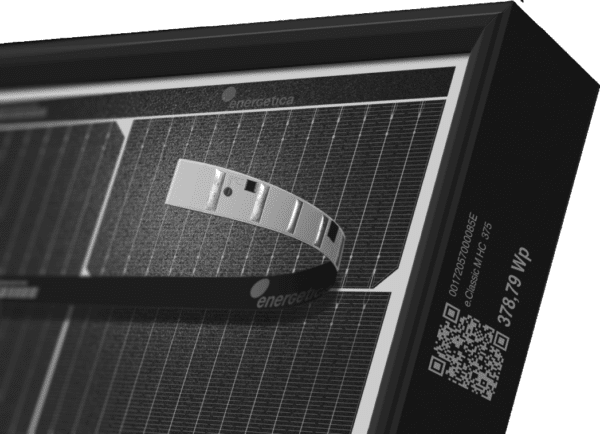 In December 2019, PV panel manufacturer Energetica began producing modules at its fab in Liebenfels, Austria. While initial production is slated at 550 MW per year, it has ambitious plans to ramp up to 1 GW of annual capacity. What makes this manufacturer unique is its sustainable approach – setting a blueprint for other companies to draw inspiration from. Constructed entirely out of wood, the fab itself takes energy from a 2.6 MW rooftop PV system, an adjacent hydropower plant, and wood-fueled (biomass) heating using locally sourced, untreated wood. While the solar cells are imported from Asia, Energetica does not use toxic substances other than lead, the content of which is reportedly 50-60% less than standard modules, owing to thinner ribbons and busbars. Regarding the backsheet, it has opted for a more recyclable version – the dyMat PYE MONO L PLUS – from Coveme. Another innovation is its plastic-free packaging solutions, which employ biodegradable foil and minimal amounts of cardboard in the form of lids. On a company level, it uses Tesla cars, and 70% of all materials are delivered by train, rather than air or sea.
In December 2019, PV panel manufacturer Energetica began producing modules at its fab in Liebenfels, Austria. While initial production is slated at 550 MW per year, it has ambitious plans to ramp up to 1 GW of annual capacity. What makes this manufacturer unique is its sustainable approach – setting a blueprint for other companies to draw inspiration from. Constructed entirely out of wood, the fab itself takes energy from a 2.6 MW rooftop PV system, an adjacent hydropower plant, and wood-fueled (biomass) heating using locally sourced, untreated wood. While the solar cells are imported from Asia, Energetica does not use toxic substances other than lead, the content of which is reportedly 50-60% less than standard modules, owing to thinner ribbons and busbars. Regarding the backsheet, it has opted for a more recyclable version – the dyMat PYE MONO L PLUS – from Coveme. Another innovation is its plastic-free packaging solutions, which employ biodegradable foil and minimal amounts of cardboard in the form of lids. On a company level, it uses Tesla cars, and 70% of all materials are delivered by train, rather than air or sea.
Jury comments:
“We are particularly impressed by Energetica’s zero-carbon manufacturing. Most PV modules are essentially dirty glass and can be mechanically recycled, with PV module waste amounting to 0.04% of global glass production in 2019. Energetica has taken steps to choose a more recyclable backsheet, and also uses biodegradable films for packaging.”
Highly Commended
Recycle PV Solar
U.S.-based startup Recycle PV Solar is collaborating with Europe’s PV Cycle (see pv magazine 12/2020) to establish PV recycling and circular economy infrastructure in the United States. The jury highlighted the positive impact this model could have when fully implemented. The company has developed processes that do not use water or chemicals, and that create no dust and low noise emissions. After separation, the modules’ materials are collected and shipped to various manufacturing plants to be used for new wiring, plastic wheels, fiberglass installations, building materials, and raw materials for the production of new solar panels. Using new technology, it aims to reduce manufacturing costs by 50%.
Jury comments:
“Recycle PV Solar is worthy of recognition because it is attempting to bring European standards for recycling of solar modules to the U.S., including the important step of refurbishing modules which can be salvaged. This step toward a circular economy for solar is small, given the volumes involved, but lays out a blueprint for sectoral development.”
The Jury
Jenny Chase, manager solar insight, BloombergNEF
Jenny Chase joined BloombergNEF in 2005 and launched the Solar Insight Service in 2006. She has conducted or overseen all research, including PV experience curve analysis, which enabled the team to accurately predict a sudden 35-40% fall in crystalline module prices a year before it happened, while most analysts were expecting a slow 5-10% annual decline.
Nancy Gillis, CEO, Green Electronics Council/EPEAT
Nancy Gillis has more than 20 years of experience leveraging sustainability to increase competitiveness, reduce risk, and foster innovation in public and private sector organizations. Prior to joining the Green Electronics Council, she was the global lead for resilient and responsible for supply chains with Ernst & Young, and director of the Federal Supply Chain office at the U.S. General Services Administration, where she was responsible for expanding the use of sustainability criteria and ecolabels in federal procurement.
Nancy Edwards, principal, Clean Power Marketing Group
Nancy Edwards built a career in entertainment and technology marketing for such brands as IBM and Applied Materials before moving into renewable energy in 2010. She formed CPMG to partner with clean energy clients who are ready to take on the challenge of creating a new renewable energy economy. Prior to CPMG, she led marketing for microinverter manufacturer SolarBridge Technologies.
Inverters
This year’s entries to the Inverter category of the pv magazine Awards saw some technologies that are right on the vanguard of what is technically possible. But more importantly, they showed what is necessary for the PV industry in the future, from home systems that allow emancipation from state subsidies to servants of the grid.
Winner
SolarEdge Technologies, Energy Hub Inverter with Prism Technology
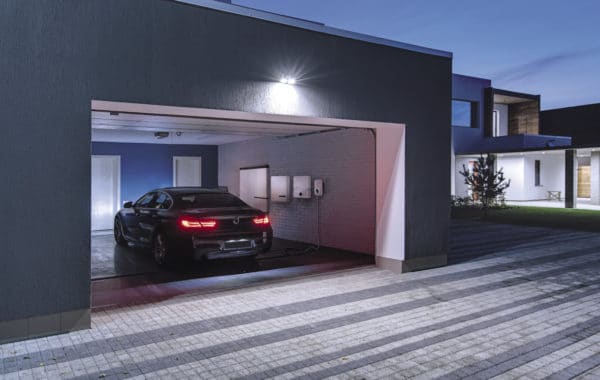 Smart home systems have been talked about and to a degree implemented for a few years now. Hitherto, the approach was largely pieced together from various soft- and hardware suppliers. With this product, however, SolarEdge has offered a comprehensive solution to control loads, offer grid support, smart EV charging and life with the security of backup power. The Prism software, at the heart of the inverter, creates a proper energy ecosystem, allowing users to maximize self-consumption, or profit from offering grid support, depending on the owner’s needs. This is a paradigm shift for residential solar PV, as with such a configuration, feed-in tariffs are less relevant.
Smart home systems have been talked about and to a degree implemented for a few years now. Hitherto, the approach was largely pieced together from various soft- and hardware suppliers. With this product, however, SolarEdge has offered a comprehensive solution to control loads, offer grid support, smart EV charging and life with the security of backup power. The Prism software, at the heart of the inverter, creates a proper energy ecosystem, allowing users to maximize self-consumption, or profit from offering grid support, depending on the owner’s needs. This is a paradigm shift for residential solar PV, as with such a configuration, feed-in tariffs are less relevant.
Jury comments:
Jenya Meydbray: “It offers a pretty comprehensive feature set, controlling the loads and appliances and also including EVs. The 2.0 DC/AC ratio is also very good in terms of DC storage, especially with those power optimizers.”
Miguel De Jesus: “It is compatible with high DC/AC ratios, and we are noticing that larger ratios are in trend especially with storage. And the warranty of up to 25 years is pretty valuable.”
Hakki Karacaoglan: “SolarEdge has experience in offering complete solutions, as it offers batteries and modules even. This gives tremendous abilities for such a combination.”
Highly Commended
KACO new energy GmbH blueplanet gridsave 92.0 TL3-S
Kaco is pioneering silicon carbide MOSFET integration. The technology allows improving efficiency and cutting down on magnetic components. However, integrating them requires know-how and the jury awarded Kaco a first-mover premium.
Ginlong Technologies Co., Ltd. Solis-255K-EHV
Ginlong’s Solis 255 K utility-scale string inverter ticked some product tied boxes for the jury. The utility-scale string inverter can handle a DC/AC ratio of 2.0, which is very much in tune with the market, and it has a higher 800 V AC output voltage which improves overall system yield.
Jury comments:
Marco Jung: “They introduce high voltage AC with up to 800 V. If you decrease the difference of the DC link voltage and the AC output voltage that connects to the grid, then you can improve energy yield.”
Miguel De Jesus: “It is like a wait-and-see game in the market, waiting for component prices to come down, and waiting for the value to stack up until it makes sense to use silicon carbide, but Kaco is pretty early to it, I applaud them for that.”
One to Watch
Trumpf Huettinger GmbH + Co. KG TruConvert AC3025
Trumpf Hüttinger entered a modular inverter cabinet, which can provide virtual inertia and impedance control. Two critical grid services, which hitherto can only be provided by synchronous generators.
Marco Jung: “I think the control virtual impedance is a really new technique, which you will see in the future more and more. If you decrease synchronous generation, someone else must do the job in the grid, in the future.”
The Jury
Miguel De Jesus
Miguel is a solar market analyst with the clean-tech and renewables research team at IHS Markit. He is responsible for research and data collection on the global PV inverter market.
Hakki Karacaoglan
Hakki is the founder of KRC Consulting and was the co-founder of Icarus Group in Turkey, Germany, and the United States. He has trained local utilities, solar associations, and universities since 2005. He is developing utility-scale projects in Europe.
Jenya Meydbray
Jenya co-founded PVEL in 2010 and now serves as its CEO. He developed the first extended reliability and performance-test protocols for the downstream PV industry. He began his career at NASA Ames Research Center’s hyper-gravity facilities.
Marco Jung
Marco serves at department head for power electronics and electric drive systems at Fraunhofer IEE. Recently, he was appointed professor for e-mobility and electric infrastructure, with a focus on power electronics, at the University of Applied Sciences Bonn-Rhein-Sieg.
Balance of systems (BoS)
Winner
5B Maverick
 First launched a couple of years ago, the 5B Maverick is rapidly building a track record of successful installations. A prewired, prefabricated ‘solar block’ that can be folded down, shipped to a site and rolled out, allowing a team of three to install up to 1 MW a week, according to 5B’s estimate.
First launched a couple of years ago, the 5B Maverick is rapidly building a track record of successful installations. A prewired, prefabricated ‘solar block’ that can be folded down, shipped to a site and rolled out, allowing a team of three to install up to 1 MW a week, according to 5B’s estimate.
The system also promises to cater for small projects of less than 30 kW, all the way up to multi-gigawatt scale. Its redeployable nature enables new business models based on flexible, short-term PPAs, as 5B has already been able to demonstrate in providing power to remote mining operations in Australia.
Jury comments:
Beth Copanas: “I like that it shakes up the ground mount market a bit, by bringing a novel fixed-tilt approach back to the forefront when so many large scale projects use trackers. As module prices continue to fall and land becomes more constrained, the factory pre-assembled approach coupled with potentially less long-term maintenance than tracking systems, makes this a valuable prospect”
Nicolas Chouleur: “When you want to reach a certain capacity, east-west is just the way to go. And anything that goes in the direction of quicker and cheaper installation, and an industrial approach where you can quality check everything in the factory, has great potential. Whatever you do in the field is more time consuming and comes with more chance of mistakes. So the idea of something that just has to be unfolded is brilliant.”
One to Watch
PV Pallet
The PV Pallet is a dedicated shipping solution for PV modules, promising to cut breakage rates during transport and handling, save as much as 50% on warehouse space, and cut end user costs for waste disposal and rebuilding of pallets.
A former solar installer developed the PV pallet in response to problems seen on site. Currently a prototype, the pallet’s creators are aiming at a full commercial launch by the middle of 2021.
Jury comments:
Nicolas Chouleur: “In many industries there are strong incentives for reusable packaging, so this is a move in the right direction for PV. Logistics is something we often disregard, but the costs here are huge and packaging generates a lot of waste.”
Beth Copanas: “I appreciate that PV Pallet is highlighting an important component of the industry logistics process that does not often get a lot of attention. As the solar industry continues to grow, products like PV Pallets offer an opportunity to examine the cost, effort and waste associated with a component of the industry that impacts how we ship, store and move modules around job sites.”
Entries to the BoS category this year saw trackers, monitoring software, shipping solutions and more, all promising to make PV energy more dispatchable and bring down costs even further. The winner this year is singled out for its potential to shake up large-scale markets and dramatically speed up installation times for projects small and large.
The Jury
Beth Copanas, director of solar energy, RES Americas
Beth has more than 15 years in the renewable energy sector and began her solar career in 2005 as a rooftop installer for residential and commercial PV systems in California. Since then, her career has spanned from design and installation to energy modeling and performance testing of residential, commercial and utility-scale projects totaling almost 1 GW.
Nicolas Chouleur, partner, Everoze
Nicolas is a partner of Everoze, a technical and commercial energy consultancy specializing in renewables, storage and flexibility. He has been working on designing, engineering and operating all kinds of PV systems throughout the world since 2006, from residential rooftop arrays to large utility-scale power plants.
Materials
Backsheets, busbars, junction boxes, and much more – PV modules require a range of highly specialized materials to continue down their path of cost reduction. This year, plaudits go a cell maker that is forging a path to TOPCon production at large scale, and others looking to open up new use cases and solve market-specific problems for PV technology.
Winner
Jolywood n-type TOPCon Cell
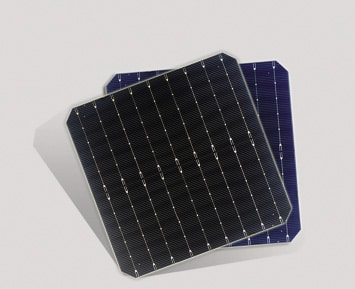 Jolywood is among the first movers bringing TOPCon cell technology to large-scale manufacturing, and has already delivered modules featuring this cell to projects the world over. The technology has several inherent advantages over today’s PERC modules, including zero susceptibility to light-induced degradation and a lower temperature coefficient.
Jolywood is among the first movers bringing TOPCon cell technology to large-scale manufacturing, and has already delivered modules featuring this cell to projects the world over. The technology has several inherent advantages over today’s PERC modules, including zero susceptibility to light-induced degradation and a lower temperature coefficient.
Jolywood estimates that its n-type cell costs up to $0.015/W more than p-type products, and offers a power rating 10 W to 20 W higher for a cell the same size. The company estimates that at project level, this can mean a 5-10% average reduction in levelized cost of electricity, compared to an installation using p-type technology.
Among the cell’s innovations are replacing phosphorous diffusion with an ion-implantation process, which Jolywood says is more suitable for cell passivation, because it is a single-side process that offers better edge isolation, and there is no chance of ‘counterdoping’ of the p terminal by phosphorous.
Jury comments:
Alex Barrows: “The progress of TOPCon and HJT is on everyone’s mind as manufacturers start to look to the future and to consider what comes after PERC. Jolywood has been an early mover into GW-scale TOPCon manufacturing, has recently released TOPCon module datasheets with impressive module efficiencies, and has made some quite exciting claims about mass production cell efficiencies and yields.”
Jonathan Govaerts: “There will be tough competition at gigawatt-scale in the next few years, but this cell presents a promising n-type evolution, including large-area IBC approach which will be interesting in the long term.”
Highly Commended
Coveme Dymat back & frontsheet
Coveme’s Dymat transparent range now features a new coating designed to offer enhanced UV protection, as well as anti-scratch and anti-abrasion properties. The coating also acts as an anti-reflective, and in testing has been shown to increase the amount of light reaching cells at low angles of incidence.
Dymat sheets are supplied with a 30-year guarantee, and according to Coveme are well suited to deployment even in harsh desert conditions, thanks to the coating’s anti-abrasion properties.
Jury comments:
Alex Barrows: “Transparent backsheet, with abrasion resistance, could be very interesting in terms of expanding the range of scenarios where people are happy to go for this rather than glass-glass. And with the frontsheet as well, further possibilities are opened up in flexible applications, BIPV, etc.”
Highly Commended
Ulbrich Black Ready Ribbon
Ulbrich’s latest offering is the company’s standard, high quality PV ribbon, coated with a layer of what it describes as “a unique halogen and halide free black flux cured in a highly specialized process.”
With a ribbon that’s already black, no spraying or dipping methods are needed, no foil to cover the ribbon after soldering, and no flux. The ribbon is produced using a plasma annealing process, which Ulbrich says cuts energy consumption by 85% compared to conventional heat treatments. The ribbon is designed as a production ready drop-in solution, requiring only very minor changes to standard stringing processes.
Jury comments:
Jonathan Govaerts: “In densely populated areas, with PV production close to the consumer, aesthetics will become increasingly important. As a drop-in solution, such black ribbons enable and accelerate acceptance for PV deployment in this growing market.”
The Jury
Alex Barrows, research analyst, Exawatt
Alex is a senior research analyst at Exawatt. He focuses on when and how new technologies will influence the PV market, and oversees PV market data analysis for the company. He obtained his PhD in the physics of perovskite-based solar cells from the University of Sheffield.
Jonathan Govaerts, PV researcher, imec/EnergyVille
Jonathan earned his Ph.D. from Ghent University, Belgium, in 2009, with a focus on packaging and interconnection technology for (flexible) electronics. He has since worked with the solar cell technology group at imec, where he focuses on cell-module integration of silicon PV cells.
Battery Energy Storage Systems (BESS)
Winner
Jua, Barrel
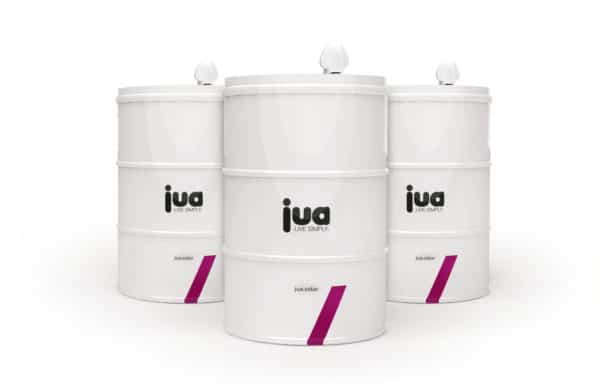 A solar hybrid solution with an innovative design and business model, the Jua battery Barrel equipped with its LifePO4 battery pack, allows storage capacity to be increased in 6.3 kWh increments for a one-size-fits-all solution. Its prepackaged design and software-integrated abilities allow fully programmable capabilities to combine different energy sources – grid, PV, batteries, wind – without the need for hardware changes. Jua points to the product’s integrated software, which has already been widely used for eight years with storage containers and microgrids, as its greatest strength. The I-cloud platform management system allows for loading priorities and limitations, along with the ability to integrate the platform for pay-as-you-go service, ticketing, invoicing, and payments for end-users. But its the unique battery in a barrel design that stands out the most – effectively thought out to increase efficiency of transport to perfectly fit four barrels in a container. “The dimension is perfect, as containers were designed to ship barrels,” Jua’s senior VP Matteo Villa, told pv magazine. The Barrel is shipped in wood, iron, or metal containers – without plastic – and all of the company’s packaging, devices, and batteries are 100% recyclable, according to Jua.
A solar hybrid solution with an innovative design and business model, the Jua battery Barrel equipped with its LifePO4 battery pack, allows storage capacity to be increased in 6.3 kWh increments for a one-size-fits-all solution. Its prepackaged design and software-integrated abilities allow fully programmable capabilities to combine different energy sources – grid, PV, batteries, wind – without the need for hardware changes. Jua points to the product’s integrated software, which has already been widely used for eight years with storage containers and microgrids, as its greatest strength. The I-cloud platform management system allows for loading priorities and limitations, along with the ability to integrate the platform for pay-as-you-go service, ticketing, invoicing, and payments for end-users. But its the unique battery in a barrel design that stands out the most – effectively thought out to increase efficiency of transport to perfectly fit four barrels in a container. “The dimension is perfect, as containers were designed to ship barrels,” Jua’s senior VP Matteo Villa, told pv magazine. The Barrel is shipped in wood, iron, or metal containers – without plastic – and all of the company’s packaging, devices, and batteries are 100% recyclable, according to Jua.
Jury comments:
Rory McCarthy: “The plug-and-play fully integrated nature of the Jua Barrel make it ideal for the offgrid market, which is still relatively untapped by energy storage. This one stood out from the crowd with a fully integrated pay-go invoicing and payment system, demonstrating an innovative end-to-end solution that could really help plug the global electrification gap.”
Chris Wright: “An innovative product designed to allow the quick deployment of systems while maintaining scalability. The hybrid controller that supports integration of solar PV, battery storage, a diesel genset, and flexibility for on-grid or offgrid installations provides substantial flexibility in system configuration and applications.”
Julian Jansen: “The Jua Barrel aims to effectively tackle electricity supply challenges in remote locations and developing economies and has effectively thought through how to overcome these – ease of installation, compatibility with different types of generation, payment, and robustness.”
The battery storage market has developed and expanded significantly in recent years – and manufacturers across the solar industry are jumping on the bandwagon. More products are being brought into the market by a variety of players. Argued by jurors to be a sign of maturity, offering opportunity for larger market competitiveness and impact, the majority of nominations shared similar design and technology. The jury opted on the side of innovative design in the selection of this years’ BESS winner.
The Jury
Julian Jansen, head of energy storage research, IHS Markit
At IHS Markit, Julian leads global analysis on stationary energy storage, value drivers, and emerging business models accelerating storage deployment across Europe and North America. Along with covering new energy technologies, he also advises on projects and the interplay between e-mobility and the energy industry.
Chris Wright, director of energy storage, CEA
Chris leads the energy storage team at Clean Energy Associates with more than 12 years of experience in renewable energy; including project development, operations, engineering, procurement and construction. Wright has performed technical due diligence on numerous emerging energy storage and battery technologies and has led various EPC efforts for solar, wind and energy storage projects in six countries.
Rory McCarthy, principal analyst of energy storage, Wood Mackenzie
Rory focuses on the Europe, Middle East and Africa storage markets at WoodMac. He comes with more than eight years of experience in the energy sector. Prior to joining Wood Mackenzie, he developed grid-scale front-of and behind-the-meter storage projects, and worked for the UK energy regulator focusing on policy and regulation for the grid edge and storage.
Publisher’s Pick
The Publisher’s Pick award, selected by pv magazine, focuses not only on the particular product that was submitted by the PV manufacturer to the pv magazine award process, but also takes a broader view encompassing the manufacturer’s contribution to lowering the cost of solar energy and accelerating the energy transition.
Winner
Growatt
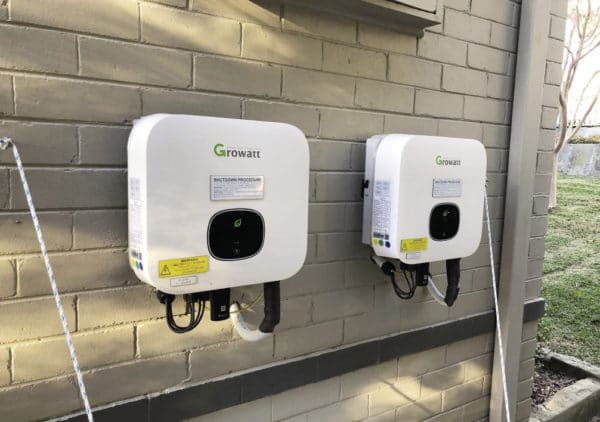 The pv magazine Publisher’s Pick award for 2020 goes to inverter manufacturer Growatt, which celebrated the tenth anniversary of its founding last year. In just 10 years, the company’s founder. David Ding, and his team have built a multinational enterprise with 13 subsidiaries and six large warehouses around the world with regional teams for marketing, technical support, and after-sales service. Growatt invests 10% of its annual revenues in research and development, and 200 of the company’s 1,200 employees are research and development engineers.
The pv magazine Publisher’s Pick award for 2020 goes to inverter manufacturer Growatt, which celebrated the tenth anniversary of its founding last year. In just 10 years, the company’s founder. David Ding, and his team have built a multinational enterprise with 13 subsidiaries and six large warehouses around the world with regional teams for marketing, technical support, and after-sales service. Growatt invests 10% of its annual revenues in research and development, and 200 of the company’s 1,200 employees are research and development engineers.
Taking a holistic view of the PV industry and developments over the past year, Growatt and its new residential solution GroHome stand out as trailblazers towards a future in which clean energy and distributed generation form dominant building blocks of the energy landscape.
Its new GroHome inverter series for the residential market is the product of this decade-long dedication to R&D. It forms the ‘intelligent core’ of its smart home energy management system, a system that encompasses much more than just the inverter and PV array. It forms a one-stop solution that integrates solar and storage, electric vehicles (EVs) and Internet-of-Things (IoT) devices. It combines high-efficiency power generation, safe electricity storage, smart power consumption, real-time energy control, and centralized management of energy information. The technologies of big data and artificial intelligence (AI) deep learning are used to support the prediction of both energy generation and consumption, and to enhance the smart control functions.
The GroHome inverter series is single-phase and battery-ready and weighs in at just 10.8 kg for capacities ranging from 2.5 kW to 6 kW. The GroHome system comprises either a battery-ready or hybrid inverter, battery storage, and a range of different communication devices connecting it with various home appliances. According to the manufacturer, the system can integrate appliances such as EV chargers, water heaters and air conditioners. Through the use of IoT smart plugs large energy-consuming devices can be added to the system.
With a fully integrated GroHome system in place, the manufacturer claims to reach a 94% self-consumption rate for a residential installation involving 4 kW of rooftop PV and 13 kWh of battery storage. At its default setting the system seeks to maximize self-consumption and minimize grid export. Customers can easily adjust this balance via an app on their smartphone, allowing the system to be aligned with the personal consumption profiles of the end-users.
There has been much talk about smart homes, but not many easy-to-use integrated solutions have been introduced to date. Growatt’s GroHome system is a true smart home enabler, and as such a trailblazing solution in making the home more energy efficient and less reliant on external energy sources.
Grohome also puts the homeowner front and center as both consumer and “prosumer,” putting a convenient app at his or her fingertips to manage the system and optimize self-consumption. All this is accelerating the energy transition, making Growatt a very worthy recipient of the 2020 pv magazine award in the category “Publisher’s Pick.”
This content is protected by copyright and may not be reused. If you want to cooperate with us and would like to reuse some of our content, please contact: editors@pv-magazine.com.